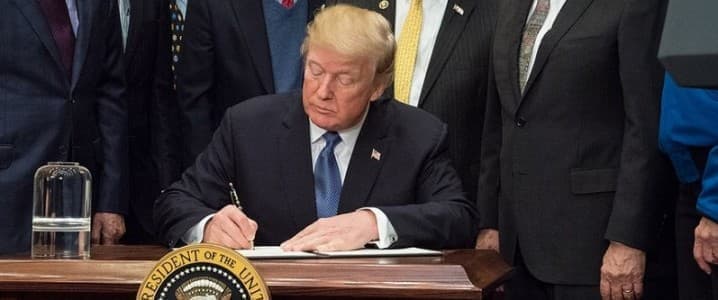Chevron started talks with the Trump administration earlier this month regarding its business in Venezuela. The goal of the talks: stay in the country and keep producing oil. The challenge: top officials’ perception Chevron’s continued presence there is propping up Nicolas Maduro. But there is also an opportunity there. Trump can use Chevron for his Venezuelan agenda.
The agenda is quite simple: keep illegal migration under control. During his first term, this did not seem to be Trump’s top priority when it came to Venezuela, with him choosing sanctions in a bid to bend the government in Caracas to his will—which did not work. But the soft power may work, with the help of Chevron. The supermajor has become instrumental in Venezuela’s recovering economy.
Chevron returned to the South American country in 2022, with a special sanction waiver that gets renewed every six months. Thanks to that waiver, Chevron has come to account for a quarter of Venezuela’s oil production, Bloomberg reported in an in-depth analysis of the situation in the country that is home to the world’s largest oil reserves. Also thanks to that waiver, total oil production in Venezuela has grown—and so have revenues.
Related: Trinidad and Tobago Seeks Extension for Venezuela Gas Project
From the perspective of the government officials who want Chevron out of Venezuela, this fact confirms their perception that the presence of the supermajor strengthens Maduro. From another perspective, however, the better the Venezuelan economy does, thanks to the fatter oil revenues, the fewer Venezuelans would want to emigrate illegally and reach the United States, authoritarian regime at home or not. It is this latter perspective that some believe President Trump may adopt.
“Chevron’s activity has introduced a crucial element for the country’s macroeconomic stabilization,” one Venezuela-based analyst told Bloomberg. “It has jump-started the economy by adding jobs and new service contracts for the recovery of wells, and by sales of foreign currency to the domestic market,” Asdrubal Oliveros added.
Meanwhile, Chevron is pursuing expansion plans in Venezuela. This month, the company eyes a 50% increase in exports of crude from its Venezuelan operations to some 143,000 barrels daily. This would be the highest export rate since March 2018, Bloomberg said in a separate report earlier this month. In the past year, the output from Chevron’s Venezuelan operations has swelled by 37%, reaching 110,000 barrels daily in January. And that is just as well in light of Trump’s threat to impose tariffs on Mexico and Canada.
This threat did not have to be carried out, but if it had, there would have been an alternative for at least Mexican crude, if not Canadian, of which the U.S. imports over four million barrels daily. Yet some reprioritization may well be underway at the White House. “The Trump administration’s immediate priority is immigration, not Venezuela’s re-democratization,” Fernando Ferreira, head of geopolitical risk at Rapidan Energy Group, told Bloomberg. “The Maduro-Grenell meeting is promising for Petroleos de Venezuela SA and Western oil companies operating in Venezuela, and supportive for Venezuelan production.”
It remains to be seen how Trump will choose to handle the situation. Currently, Chevron’s operations in Venezuela are undergoing a review, and when asked about whether he would allow the continuation of exports by the company from Venezuela, Trump, as reported by Bloomberg, said, “Maybe not.”
However, the immediate concern that is unchecked migrant flows might eventually trump any other concerns the president might have about Venezuela. As the Atlantic Council’s head of energy advisory, David Goldwyn, put it to Bloomberg, “Chevron’s activity in Venezuela is in both countries’ interests, as it’s having an efficient player helping the Venezuela economy from falling back and preventing migrants from coming back.”
By Charles Kennedy for Oilprice.com
More Top Reads From Oilprice.com
